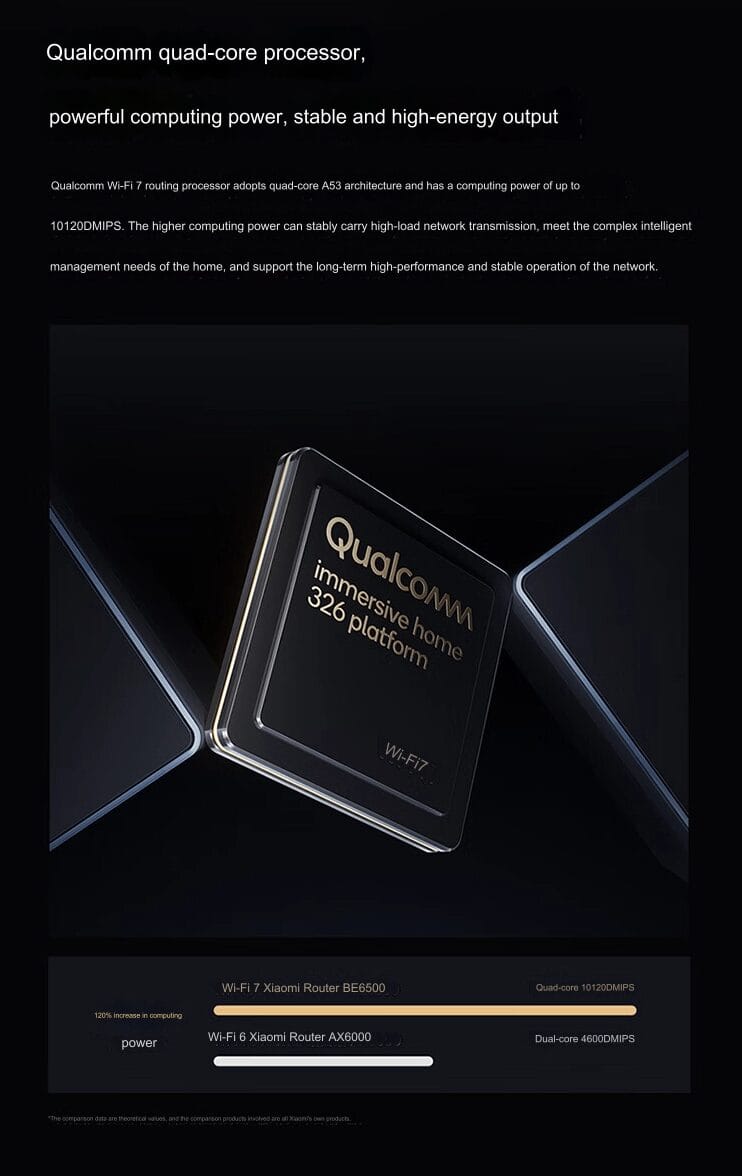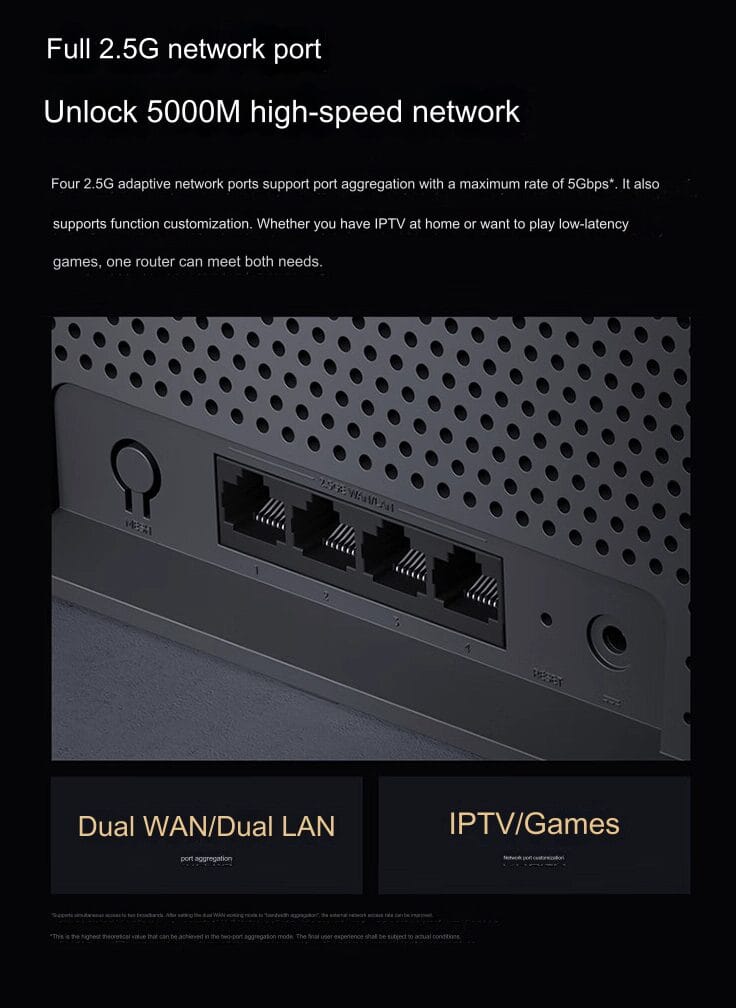Xiaomi, being a world-leading innovative technology company, has just announced the pre-sale of its latest device for networking, the Xiaomi BE6500 router. The new model is not just another incremental update, but a huge leap forward as it supports the state-of-the-art protocol Wi-Fi 7, including advanced features to improve the user experience.
Advanced Connectivity with Wi-Fi 7
The Xiaomi BE6500 is one of the early routers that support the Wi-Fi 7 protocol—this newest standard with far better properties of wireless communication. Most significant to its improvements, Wi-Fi 7 is meant to enhance network efficiency by largely lessening latencies and contemporaneously scaling both capacity and speed for wireless networks. This could mean more reliable connections for users, especially in an environment teeming with devices.
Powerful Hardware Under the Hood
At the core of the BE6500 is a Qualcomm quad-core A53 1.1 GHz processor chip with computational power equivalent to 10,120 DMIPS. With heavy-duty processing and 512MB RAM memory, it gives seamless performance under any heavy load.
Upgraded Network Ports
After all, the BE6500 by Xiaomi is accompanied by four adaptive network ports at a speed of 2.5G. These ports are not only faster than your typical Gigabit ports, which appear on most by a factor of 10, but they also support port aggregation. Multiple network cables can be bound through that single port, boosting the maximum potential to 5Gbps and offering more flexibility for managing networks.
MLO Dual-Band Aggregation
The BE6500 supports Multi-Link Operation in dual-band aggregation. This feature means that smart devices can establish a connection to two WiFi bands simultaneously. This can provide big benefits in terms of stability and speed of the connection because it can switch between these bands around seamlessly to make these band changes, which depend on network conditions.
High-Order Modulation
The high-order modulation technology, 4KQAM, is also supported by both bands of the router. This type of modulation scheme applies advanced compression to effectively lessen the data density, and then advances the throughput of data per unit time as well, thereby providing the BE6500 with the ability to transmit data more effectively and quickly than ever before.
Customized Options
The BE6500 supports so many function customizations that they enable the user to have a full view on how best one wishes the networking experience to be presented to them. From the very creation of a guest network down to parental control options and finally, even gaming optimization, it gives the total tools needed in creating a personalized and secure home network.
Price and Distribution
The Xiaomi BE6500 router is priced with appeal pricing at 599 yuan (83 USD). Pre-sale price is 499 yuan (70 USD). Establishing this price has made it affordable to all features of a high-end router because they ensure that more users can afford benefits of the latest networking technologies, hence ensuring a win-win situation.
Design and Aesthetics
The router has a very sleek design with a pure black glossy finish, so it should blend into any home or office. What does not end here is that the design has also been crafted to attain the best aeration and cooling, ensuring stability in performance over a long period of use.
The BE6500 from Xiaomi really takes that big step further in your home networking presence—one of the big ones toward reaching mainstream market Wi-Fi 7, plus a multitude of other top features. Built from advanced hardware with powerful connectivity options and user-friendly customization functionalities, the creation could certainly establish a new quality standard for others in the industry. Designed with advanced hardware, powerful connectivity options, and user-friendly customization functionalities, with Xiaomi BE6500, endless possibilities have just gotten into the arena.


 Emir Bardakçı
Emir Bardakçı




